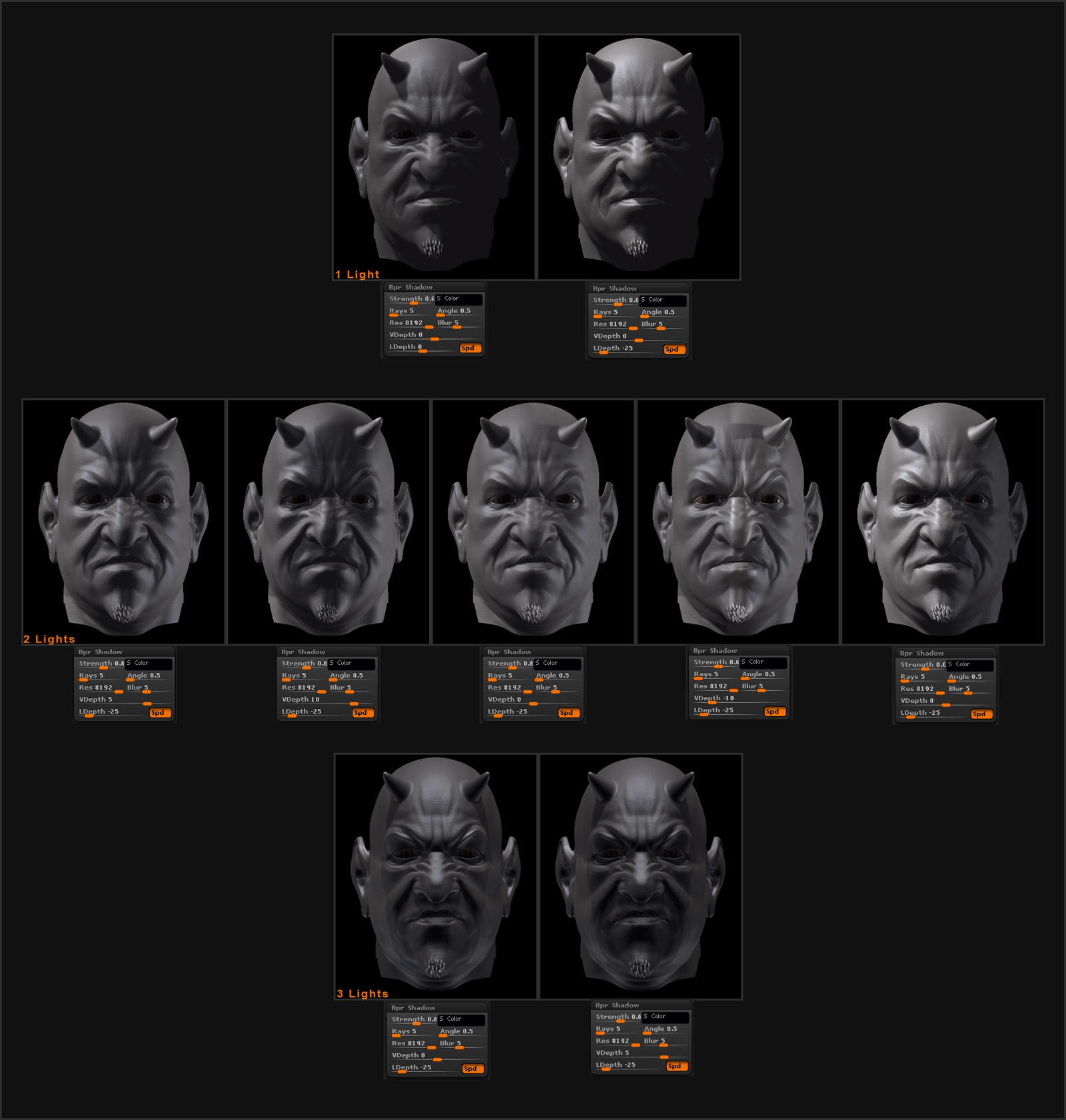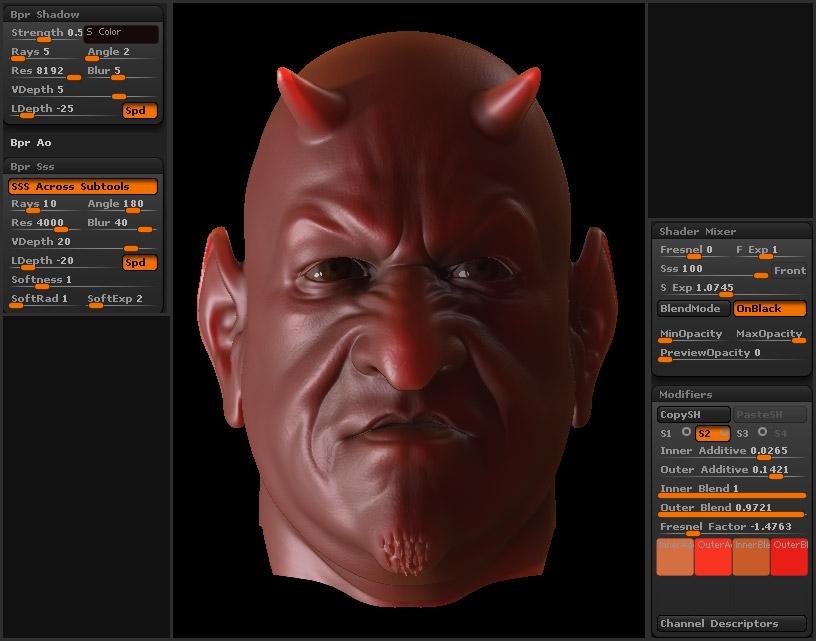as sort of a concluding word I wanted to emphasize to only use my research as a starting point, but do your own experiments case by case. as far as I found, out there is really no best-for-all setting.
a few things to point out -
SSS:
All settings in the BPR SSS panel have a pretty huge impact except for the 3 softness sliders at the bottom and the ray slider. rays set to 5-10 witll be fine for just about everything.
if you set your res high , which in my opinion helps detail quality and crispness, then blur must go up as well. it’s worth it, but ‘Blur’ seems to have the highest impact on render time.
I usually go for Res 4000 + Blur 40.
-going low into the Ldepth minus is good for intense sss and if you ****er balance it with going up in Vdepth you push the more sss to edges and peaks instead of having it was all over the mesh.
-Also the Fresnel settings in the shader and shader mixer are a good point to regulate how much the sss blurs all over or how defined and more crisp your mesh remains. for example minus fresnel settings help to keep your darker shadows and edges more defined and not so softened out by the sss.
-same goes for the S-Exp slider when you push it up. Vdepth, Fresnel and S-exp all have slightly similar impacts on the sss spread.
-the sss slider in the shader mixer of the sss shader does NOT just turn sss on or off. check it out and see that at 0 you actually have heavy sss spread all over equally. see it more as a balance slider which is shifting the sss either inwards or outwards.
- finally the angle in the BPR sss panel also has a dramatic impact. quickly to test out though. try between 90, 180 and 360 to see what it does. Naturally I find 180 to be very good middle ground.
Shadows:
-High Res settings with a blur around 5 give you probably the best quality of sharp well defined shadows.
-the further you slide Ldepth down the more “contrast” you get. an Ldepth of -25 for example looks good counterbalanced by a Vdepth of +5, if you go for defined shadows. too much Vdepth usually gives you not much more than overall darkness.
-higher Angles mean blurrier shadows to the point where it looks like ambient occlusion. might be useful for alternate AO, since I still find the AO render itself to time expensive for the rather blurry blobby shading it does. haven’t spend much time with it though.
- last but not least, play around with your light curves in the light menu.
careful though, you might wnat to save out lights you like, because the reset button on thise curves is defunctinal ( BUG??).
-when rendering with BPR only the following light settigns have an impact. all others are inactive when you render a BPR :
-light direction
-light intensity curve
-ambient
-shadow on/off
-sss
-type of light
the shadow settings at the bottom of the panel have no impact and are all controled by the shadow settings in the BPR shadows menu.
( and no Michalis, it doesn’t matter if you set your rim light shadow intensity to 100 or 0.  I have tested it out countless times. no impact)
I have tested it out countless times. no impact)
Aaaaand not to forget: The material you use has of course also a huge impact on how your shadows and sss render.
The default skin sphere project file is a real nice starting point btw.
good night and good luck 





 Extremely personal of course.
Extremely personal of course. but I also like oil. pfss… I like it all.
but I also like oil. pfss… I like it all.





